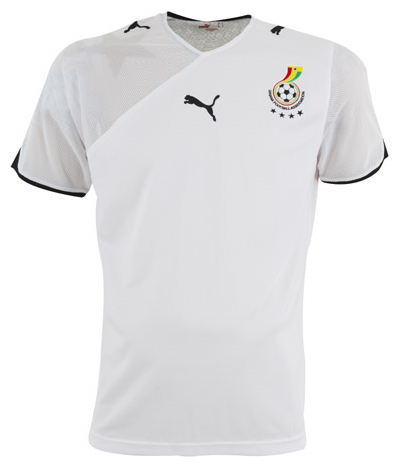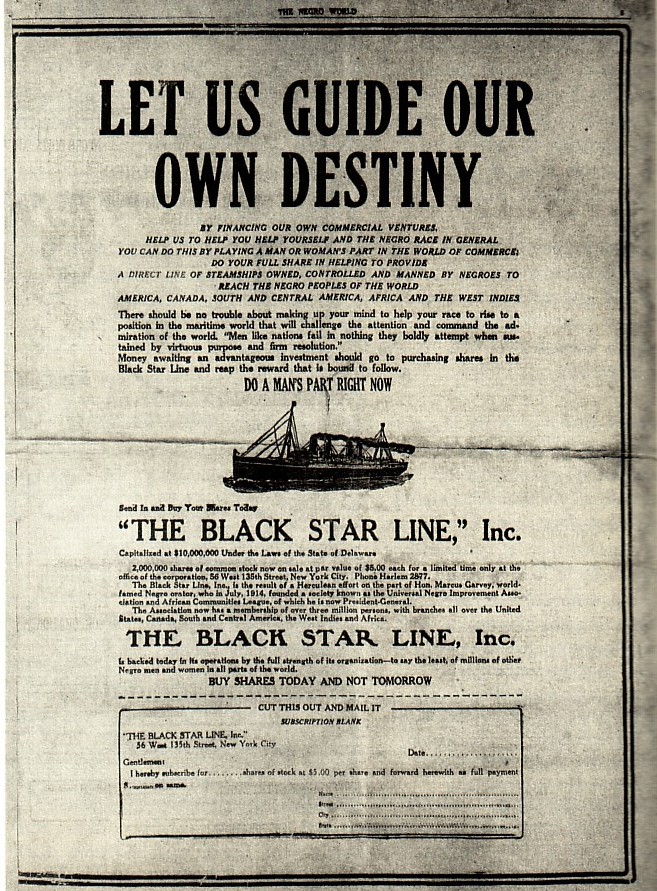How the Black Stars of Ghana Got Their Names

It's easy to see on TV but harder to find a good photo: can you make out the black star on the right shoulder of the Ghanaian jersey?
Here’s a little social history to impress all your soccer-mad friends during this year’s World Cup: Â Ghana’s national team, the Black Stars, can trace its nickname to Marcus Garvey’s Universal Negro Improvement Association. Â Ghana was the first sub-Saharan African nation to gain independence from Britain in 1957. Â The newly self-governing nation changed its name from Gold Coast and adopted a flag that featured the tri-color banner of Ethiopia and a black star that recalled Marcus Garvey’s pan-Africanism, black nationalism and, specifically, the Black Star Line.
Garvey’s Universal Negro Improvement Association was the largest mass movement of African Americans in history (to that point); the UNIA flourished in the late 1910s and 1920s. Â Garvey, a Jamaican immigrant, and the UNIA stridently called for black independence–economic and cultural independence in the United States and political independence in Africa. Â Garvey’s philosophy echoed the World War I rhetoric of self-determination for all peoples. Â The UNIA established a framework of businesses, newspapers, fraternal organizations, and conferences to promote its goals of self-help and self-respect. Â A million Americans joined hundreds of chapters and staged parades throughout the country; many thousands more in the Caribbean and Africa also supported the movement.

Let Us Guide Our Own Destiny: Advertisement for shares in the Black Star Line
The UNIA’s most ambitious undertaking, the Black Star Line, was established in 1919 as a black-owned, black-operated shipping line that would carry cargo and people between Africa, the Caribbean and the United States.* Â Thousands of African Americans purchased $5 shares in the venture; supporters were so enthusiastic that Garvey was able to acquire the Black Star’s first ship in only three months. Â Though the Black Star Line eventually folded through a combination of mismanagement, bad weather, and the interference of J. Edgar Hoover’s Bureau of Investigation, it embodied Garvey’s philosophy of black self-sufficiency, race pride and pan-African unity.
Seeing the imagery of Garvey’s Black Star Line show up on the field of play in the World Cup is a good reminder of the significant role that Garvey’s ideas about black nationalism and the unity of all people of African descent had in the African independence movements of the twentieth century. Â He called for “Africa for the Africans.” Â Garvey’s ideology underlay the proceedings of the Fifth Pan-African Conference in 1945 that laid out the goals for a post-colonial Africa. Â (Sixty-five years later, Africans now take great pride in hosting a World Cup and showing the world evidence of African political, social and economic progress.) Â When we see and hear about the Black Stars of Ghana today, it’s an opportunity to recall the first black nationalist movement they are named for.
*The Black Star Line was a clever twist on the name of Britain’s White Star Line.
Last 5 posts by Leah Nahmias
- Teaching "What This Cruel War Was Over" - March 28th, 2011
- State of Siege and Public Memory at Ole Miss - March 25th, 2011


